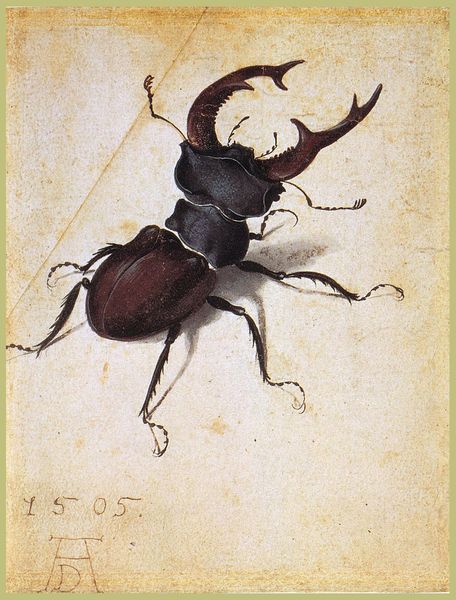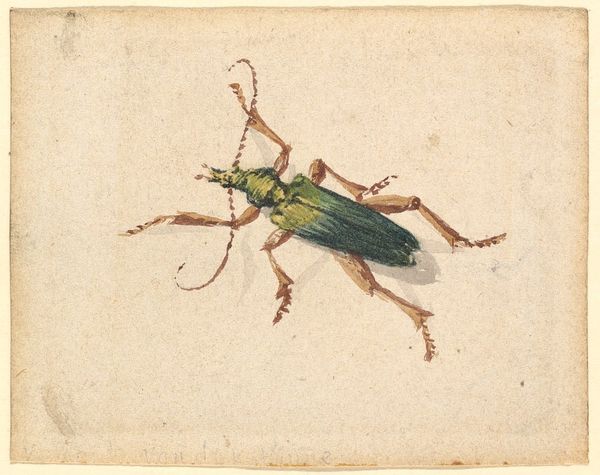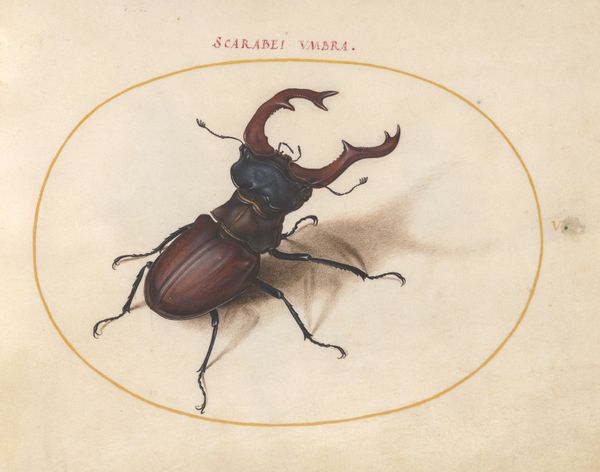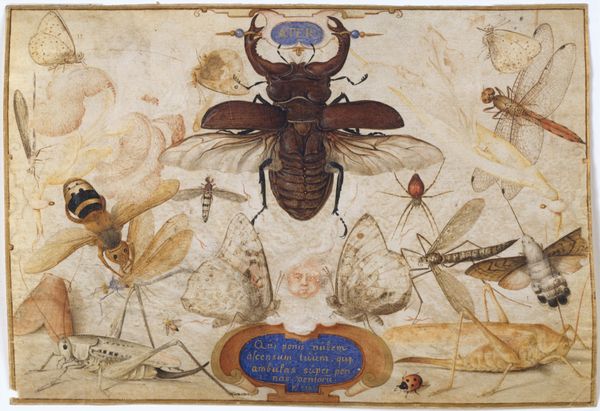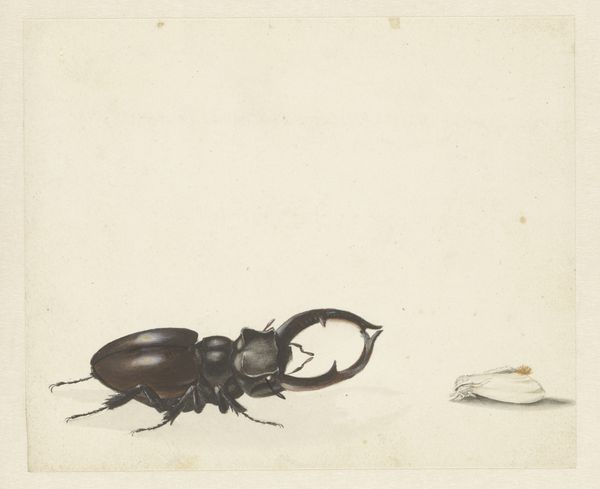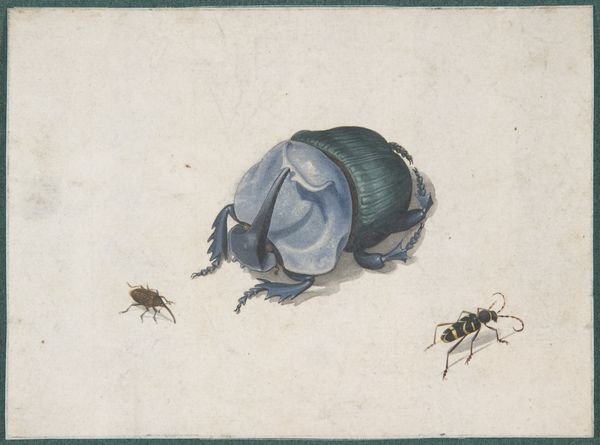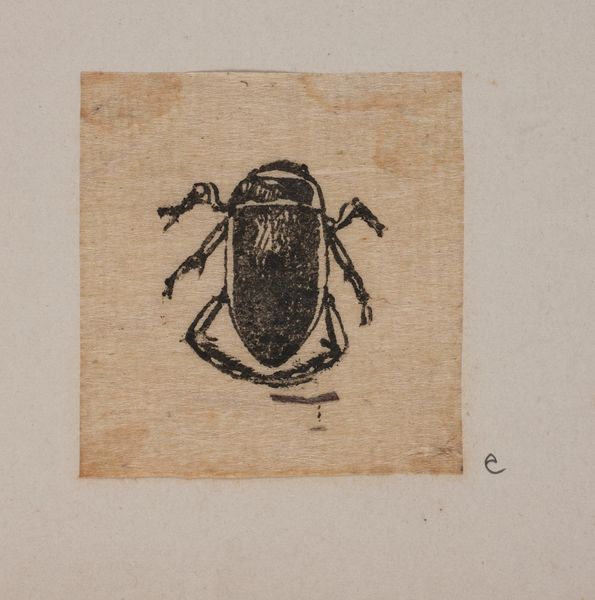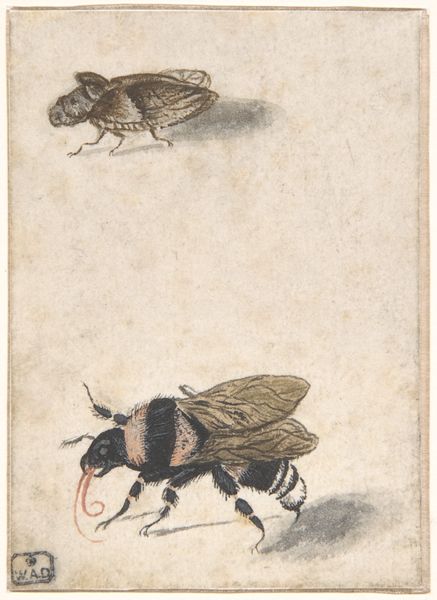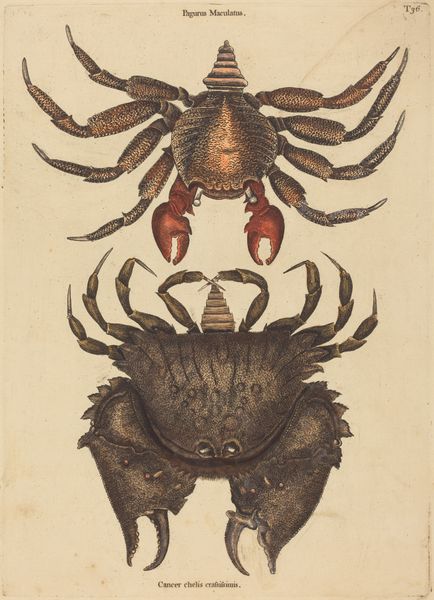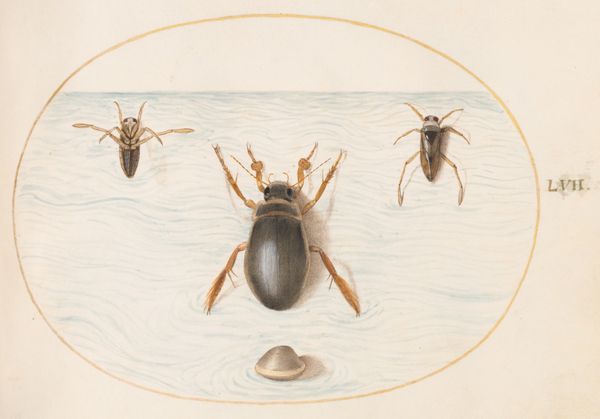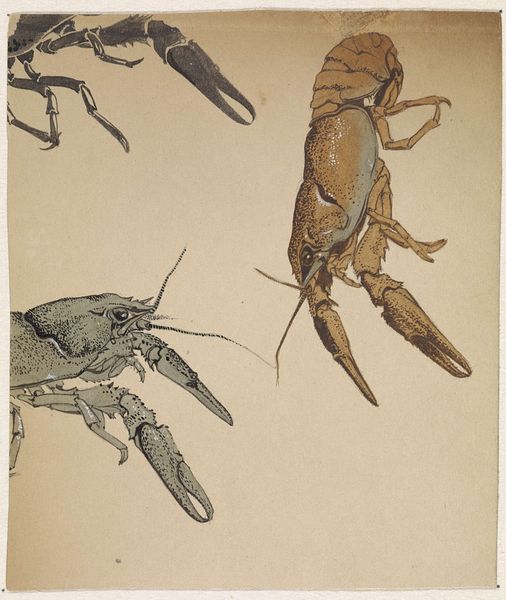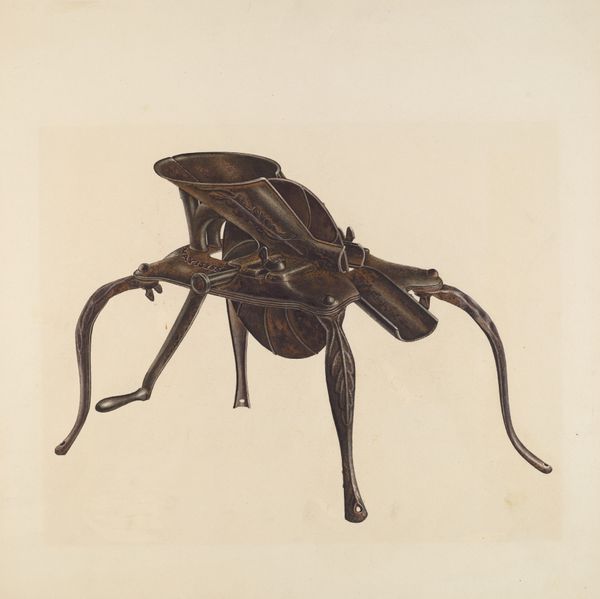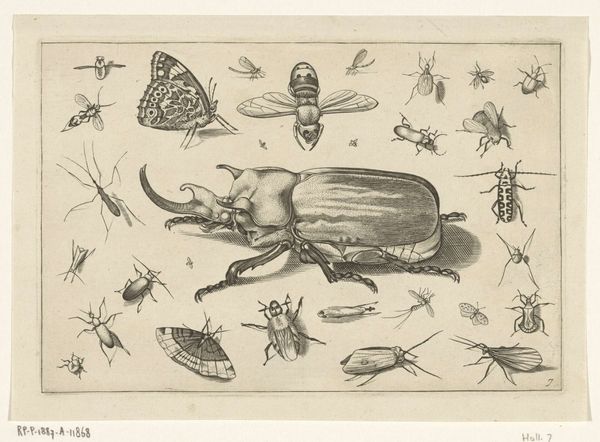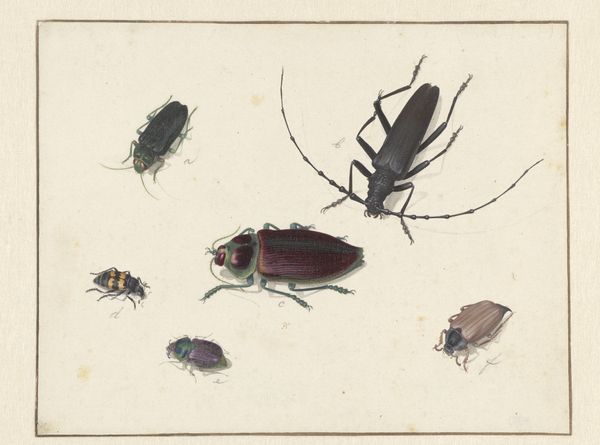
drawing, paper, watercolor, ink
#
drawing
#
paper
#
11_renaissance
#
watercolor
#
ink
#
coloured pencil
Copyright: Public domain
Curator: Looking at this drawing, my first thought is, 'powerful!' The stag beetle, centered within the oval, seems to be captured with dynamic intensity, despite the stillness of the image. Editor: Indeed. We're observing "Hirschkäfer (nach Albrecht Dürer)" by Hans Hoffmann, executed in ink and watercolour on paper. What's striking about Hoffmann is that, while a contemporary, he consciously emulated Dürer, both in subject and style. Curator: That’s a fascinating element—the intentional act of echoing Dürer. Insects, like the stag beetle here, held symbolic weight in the Renaissance. Do you perceive particular symbols at play here? Editor: Absolutely. The stag beetle, with its antler-like mandibles, often embodies strength and virility. Its hard exoskeleton could symbolize resilience, while its burrowing nature might speak to hidden, darker aspects of the psyche. Consider how this depiction aligns or diverges from those associations given the influence of Albrecht Durer's original. Curator: It's interesting to consider this drawing in the context of sixteenth-century collecting practices, where curiosity cabinets, often held detailed scientific illustrations such as this example. Hoffmann's contribution gains cultural currency through it´s associations and Dürer and collecting trends of the Renaissance. Editor: Hoffmann also appears to want to highlight a duality in nature: meticulous rendering against a comparatively blank backdrop. That negative space, while simple, throws the beetle's formidable details—down to each hair-like leg and meticulously crafted mandible—into stark relief. The precision here reminds one of illuminated manuscripts, investing even the humble beetle with the artistic importance typically assigned to sacred objects. Curator: Certainly, this underscores the growing appreciation of natural studies as works of art during the Renaissance, influencing perceptions about science and nature and raising debates about copying. And if you were looking to create legitimacy for these observations and studies, linking it back to someone like Albrecht Durer is genius. Editor: Indeed. The symbology merges with artistic emulation in ways that reveal the priorities and values of Renaissance Europe. Thanks to Hoffman and earlier, Durer for leaving such legacies and rich layers of interpretations, giving us lots to think about.
Comments
No comments
Be the first to comment and join the conversation on the ultimate creative platform.
